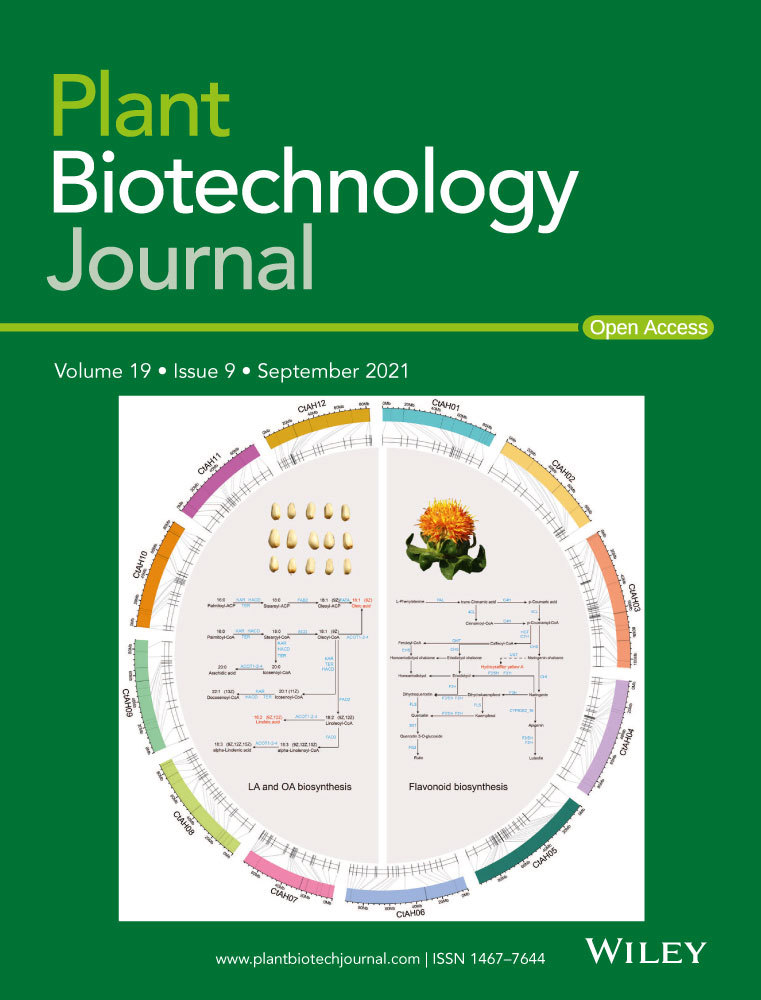- EN - English
- CN - 中文
Sclerotinia sclerotiorum Protoplast Preparation and Transformation
核盘菌原生质体的制备与转化
(*contributed equally to this work) 发布: 2023年01月05日第13卷第1期 DOI: 10.21769/BioProtoc.4581 浏览次数: 1255
评审: Zhibing LaiShweta PanchalRitu Gupta
Abstract
Sclerotinia sclerotiorum causes white mold, leading to substantial losses on a wide variety of hosts around the world. Many genes encoding effector proteins play important roles in the pathogenesis of S. sclerotiorum. Therefore, establishment of a transformation system for the exploration of gene function is necessarily significant. Here, we introduce a modified protocol to acquire protoplasts for transformation and generate knockout strains, which completements the transformation system of S. sclerotiorum.
Background
Sclerotinia sclerotiorum (Helotiales: Sclerotiniaceae), a phytopathogenic pathogen, infects more than 400 plants, including vegetables and ornamental plants (Kabbage et al., 2015). As the complete genome assembly of S. sclerotiorum is available, many genes encoding effector proteins have been preliminarily validated (Derbyshire et al., 2017). Preparation and transformation of protoplast are important measures to obtain mutants and research gene function. We introduce a protocol based on a standard protocol with minor modifications (Rollins, 2003). This method redounds to production of complete protoplasts for observation and transformation. Using this method, we successfully acquired SsVPS51, SsDCTN1, and SsSAC1 knockout mutants, respectively (Qiao et al., 2021). Therefore, polyethylene glycol–mediated transformation is suitable for protoplast transformation of S. sclerotiorum, providing a convenient method for studying its genetics.
Materials and Reagents
1.5 mL microfuge tube (Axygen)
2.0 mL microfuge tube (Axygen)
Petri dish (9 cm diameter)
40 µm cell strainer (Xiyan Co., Ltd., catalog number: 15-1040)
Syringe filter (Pall Corporation, catalog number: 4612-0.2 µm)
Sterile blade (ShangHaiLianHui Medical Instrument co., Ltd.)
50 mL centrifuge tube
50 mL conical flask
100 mL conical flask
250 mL conical flask
KCl (BIODEE, catalog number: DE-0395A-250 g)
CaCl2 (BIODEE, catalog number: DE-0556A-500 g)
Agar A (BBI Life Science, catalog number: A600010-500 g)
Potato dextrose broth (Solarbio Life Sciences, catalog number: P9240)
D-sorbitol (Sigma-Aldrich, catalog number: S3889-500 g)
Tris-HCl (Sigma-Aldrich, catalog number: T6666-500 g)
Sucrose (BBI Life Science, catalog number: A100335-250 g)
Yeast extract (BBI Life Science, catalog number: A515245-500 g)
Hygromycin B (Thermo Fisher Scientific, GibcoTM , catalog number: 10687010-20 mL)
Glucanex (Sigma-Aldrich, catalog number: L1412-5 g)
Polyethylene glycol 3500 (Sigma-Aldrich, catalog number: 25322-68-3-250 g)
Spermidine (Sigma-Aldrich, catalog number: 05292-1 mL)
Heparin (Sigma-Aldrich, catalog number: H3149-500 KU)
Casamino acid (Sangon Biotech, catalog number: A603060-100 g)
KCl buffer (pH = 6–6.5) (see Recipes)
0.5% Glucanex (see Recipes)
Phanta Super-Fidelity DNA Polymerase (Vazyme, catalog number: P501-d2)
STC solution (see Recipes)
SPTC solution (see Recipes)
PDA medium (see Recipes)
PDB medium (see Recipes)
RM medium (see Recipes)
RMA medium (see Recipes)
Equipment
1,000 µL micropipette (Eppendorf)
200 µL micropipette (Eppendorf)
10 µL micropipette (Eppendorf)
Centrifuge (Eppendorf, model: 5424R)
Centrifuge (Eppendorf, model: 5810R)
Hemocytometer (Devan Scientific Co., Ltd., catalog number: AP-0650010)
Bacterial shaker incubator (Crystal Technology & Industries, model: IS-AX-190L)
Biochemical incubator (Shanghai Yuejin Medical Device Co., Ltd, model: HPX-B400)
Zeiss Axio Observer (Zeiss)
Procedure
文章信息
版权信息
© 2023 The Authors; exclusive licensee Bio-protocol LLC.
如何引用
Lan, C., Qiao, L. and Niu, D. (2023). Sclerotinia sclerotiorum Protoplast Preparation and Transformation. Bio-protocol 13(1): e4581. DOI: 10.21769/BioProtoc.4581.
分类
微生物学 > 微生物细胞生物学
分子生物学
您对这篇实验方法有问题吗?
在此处发布您的问题,我们将邀请本文作者来回答。同时,我们会将您的问题发布到Bio-protocol Exchange,以便寻求社区成员的帮助。
提问指南
+ 问题描述
写下详细的问题描述,包括所有有助于他人回答您问题的信息(例如实验过程、条件和相关图像等)。
Share
Bluesky
X
Copy link









